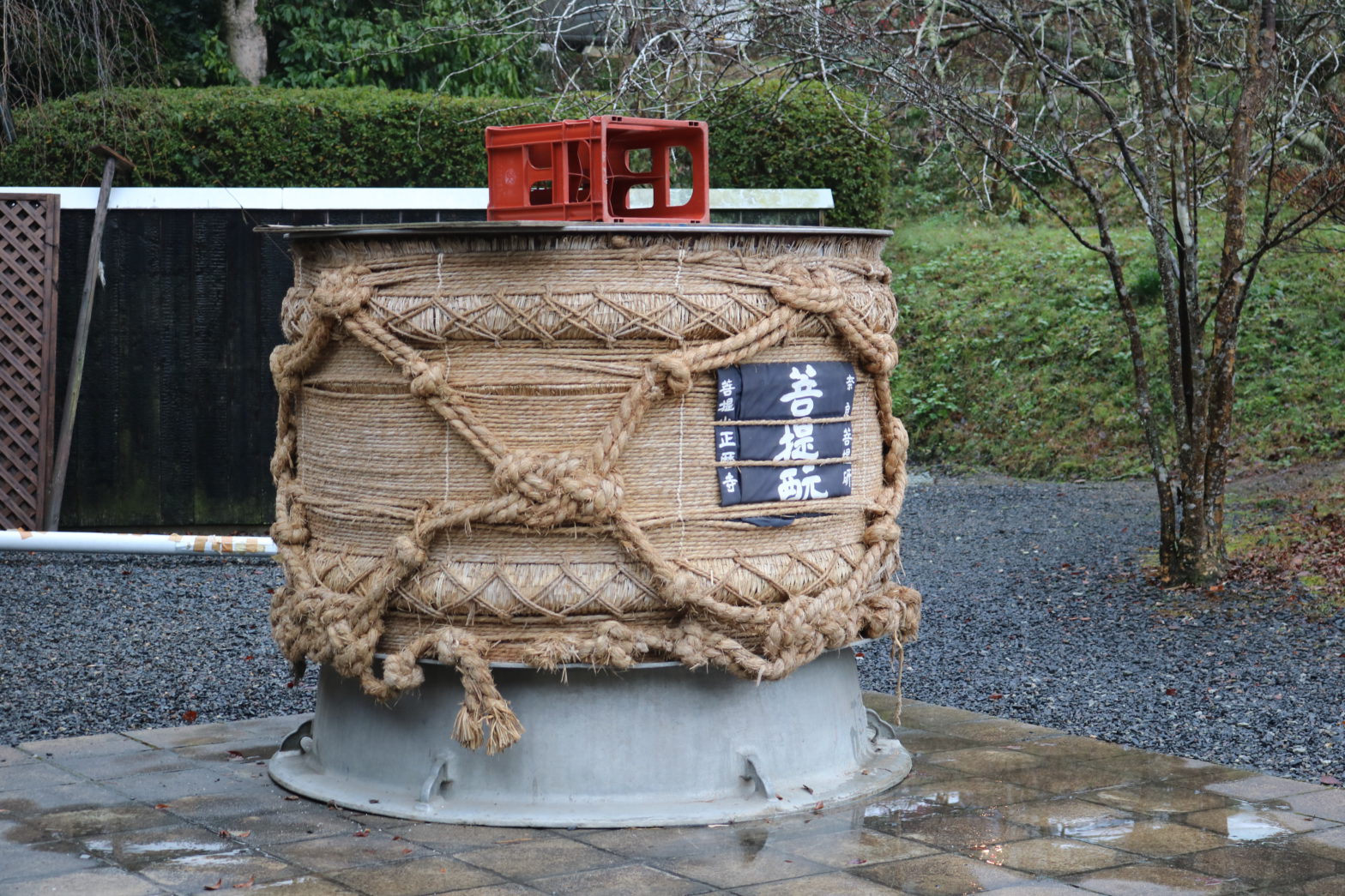Bodai-moto is a specific starter that uses raw rice and the activity of natural lactic acid bacteria. Although records show that some regions produced sake in this way, it was revolutionary at that time for Bodai Shoryakuji-temple to divide the process of starter and main fermentation.
Thanks to accumulated lactic acid produced by natural lactic acid bacteria, Bodai-moto can protect against the propagation of destructive fungus and enables the propagation of useful yeast for fermentation. This Bodai-moto would have been a prototype of ki-moto developed in the Edo period, which itself led to the development of Sokujo-moto in the 20th century.
Bodai-moto’s major characteristic is enabling summer production of sake, which is generally not at all ideal because of the higher risk of the mash going to rot. Natural lactic acid bacteria require a temperature of 20-35℃ so the pace of propagation is faster in the warm summer months. Sufficient lactic acid is therefore produced in a shorter timeframe using Bodai-moto, creating an environment resistant to destructive fungus at a time when most sake is at the highest risk of contamination.
In terms of production, raw rice and a small quantity of steamed rice are mixed with water under warmer conditions, to create Soyashi-mizu (Soyashi-water). Soyashi-mizu is left for three days for the natural lactic acid bacteria to start propagation. There are several special aspects of sake production at Bodaisan Shoryakuji temple:

#1:Water
The water takes from Bodaisan Shoryakuji-temple has been found to contain very specific natural lactic acid bacteria (Lactococcus lactis subsp.lactis, better known as “Shoryakuji-temple lactic acid bacteria”). These bacteria show superior ability in terms of lactic acid production speed when compared with the lactic acid bacteria found in Ki-moto and Yamahai-moto. They are able to eradicate all destructive fungus overnight.
#2:Raw rice
The starch in raw rice contains saccharification enzymes such as Amylase (β-amylase) and Glucoamyalase, so saccharification can be started using raw rice. (Steamed rice only accounts for around 10% of Soyashi-mizu.)
Then lactic acid bacteria eat the glucose and start propagation. When acidity is down to pH5, Glucoamylase increases activity because of its preference for an acidic environment, thus saccharifying more rapidly. (Lactic acid bacteria also release more lactic acid because of the glucose-rich environment.)
This convenient cycle brings the acid level down to pH4, at which point destructive fungus cannot survive.
In this condition, naturally occurring yeast falls into Soyashimizu. (Nowadays, it is introduced intentionally to start propagation.
After that, raw rice is removed from the Soyashi-mizu and steamed. The lactic acid-rich water is removed from the tank then steamed rice, koji, and the lactic acid-rich water are once again mixed together in the tank. Thanks to the enzymes from koji, saccharification is carried out, yeast propagates rapidly and fermentation starts.

When the alcohol level increases, Shoryakuji-lactic acid bacteria start dying because of their low resistance to alcohol. Protected from destructive fungus contamination by accumulated lactic acid and alcohol, yeast propagates dramatically and completes the starter. In this way, Bodai-moto is produced and the process moves to the next stage of main fermentation.
Although Bodai-moto was invented 500 years ago and was widely prevalent in Japan, it has a higher risk of going to rot compared with Sokujo-moto and Yamahai-moto and is very complicated, so it went out of use in the early 20th century.

